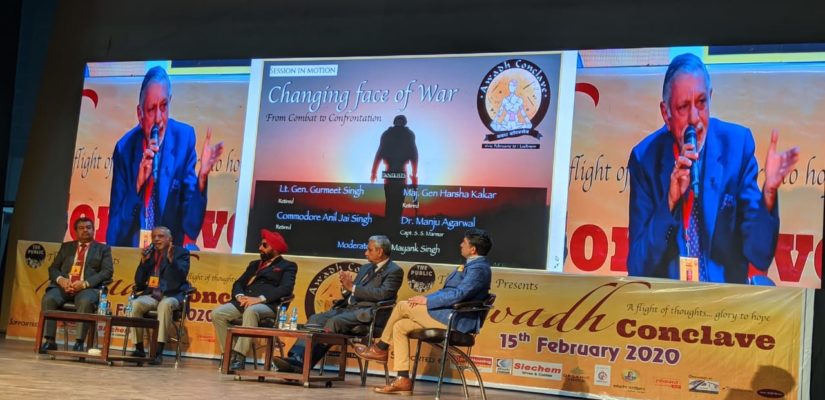
Does India need to integrate the CAPFs? The Excelsior 12 Mar 2020
Does India need to integrate the CAPFs? 12 Mar 2020
The armed forces are on the way to the creation of theatre commands and greater integration. The three services have vastly different roles (land, sea and air) however possess a similar task of national security. The intention of integration is to reduce the working budget, cut down manpower, enhance efficiency, bring in synergy in operations and create common logistics and repair nodes while sharing facilities. This was long due and is finally on the way.
Presently, the three services, even though deployed in the same city, have logistic facilities separate to each other, training institutions catering for not only each service needs but also for other services and in the case of transport, operate different sets of vehicles thus creating additional inventories and repair echelons. In many cases these could either be amalgamated or in the case of repair facilities outsourced and hence lead to reduced inventories.
This is a similar status with all Central Armed Police Forces (CAPFs) within the country. While, it could be argued that each has its own role and task, nothing could be more varied than the roles and tasks of the armed forces. Broadly the CAPFs are in two parts, those responsible for external security and those for internal.
The area of operations of the CAPFs may vary but there could be similar integration within them, reducing strength by amalgamating HQs and manpower, cutting maintenance costs by bringing about synergy in training as also in maintenance and procurement. Their tasking may vary, but their terms and conditions of service are almost similar.
The CAPFs have a variety of organizations at present. The Sashastra Seema Bal (SSB) has a sanctioned strength of approximately one lakh spread over 73 battalions. It is responsible for border security with Nepal and Bhutan. The Indo-Tibetan Border Police (ITBP) has a sanctioned strength of approximately 90,000 and is generally deployed along the Chinese border in high altitude regions, spread from Ladakh to Sikkim and onwards to Arunachal. The Border Security Force (BSF) has a strength of approximately 2.5 Lakhs and is responsible for the International Border along Pakistan and Bangladesh. These three CAPFs secure borders and hence handle external security.
The Central Reserve Police Force (CRPF) has a sanctioned strength of approximately 300,000 spread over 246 battalions. Its main task is internal security including Naxal areas and J and K, where it operates in conjunction with the army. The Central India Security Force (CISF) presently responsible for security of select government industries, airports etc, has a sanctioned strength of 145,000.
Thus, when covered in totality the CAPFs comprise of approximately 9 lakhs personnel. When they were raised, there was no visualization that they would grow and expand to the level they have, hence each was raised independently. With their tasks having matured over the years, there is a need to reconsider their current status.
Different CAPFs, even if deployed in the same region or city has multiple HQs and administrative elements for each. In every force, HQs are on the increase. The ITBP has raised additional HQs for its troops deployed in the northern sector. There are reports that the CAPFs seek to further increase their senior rank structure and add to existing HQs, rather than reduce them. These are intended to enhance vacancies for the IPS cadre. Never has there been a serious thought given for integrating CAPFs, thus reducing vacancies, enhancing efficiency, sharing culture, curtailing expenditure and bringing about a saving in maintaining large administrative repair and logistic facilities.
The merging of ITBP, BSF and SSB under a single entity may explain the point. Ideally, despite their differences in areas of responsibility and deployment, these forces have a similar task of external security, in some cases alongside the army, in others independently. Hence, they can be combined under one entity, with common training, administration and procurement. It could also lead to reduction of the number of subordinate HQs. Subsequently, specialized training for them could be conducted separately. It may, in some timeframe, also lead to switching of roles and tasks.
Similar action could be considered for the CRPF and CISF, where the role is more inclined towards internal security as compared to external security of the other forces. Once combined, their deployment and operational responsibility could also be shared.
Another aspect which the government needs to seriously consider is that external security forces (army, ITBP, BSF and SSB) should operationally function under one commander, wherever they are deployed, despite the nature of terrain. Where they are deployed independently, as in the case of SSB, along the Nepal and Bhutan border, and BSF along the Bangladesh border, the case may be different. This would help in amalgamating operational plans, enable sharing of common resources and integrate intelligence agencies of all forces. After all, their task is common, ensuring national security.
With armed forces moving towards theatre commands, all these forces, including their respective HQs in operational areas must be under command of theatres. This would coordinate external security better.
The top cadre of all these CAPFs flows from the IPS, with limited promotions for CAPFs own inhouse cadre, despite court orders. Any thoughts of merging them are therefore nipped in the bud because it could lead to reduced vacancies at the apex level. With different command and control structures, maintenance costs only increase and add to the overall national expenditure. Though there is an unofficial single head for all CAPFs under the MHA, however, his role is limited.
It is time for changing status quo and seeking better financial and manpower management within the CAPFs. It is only the present government which can consider this need and push for a change. This would benefit the nation, enhance efficiency and reduce expenditure.